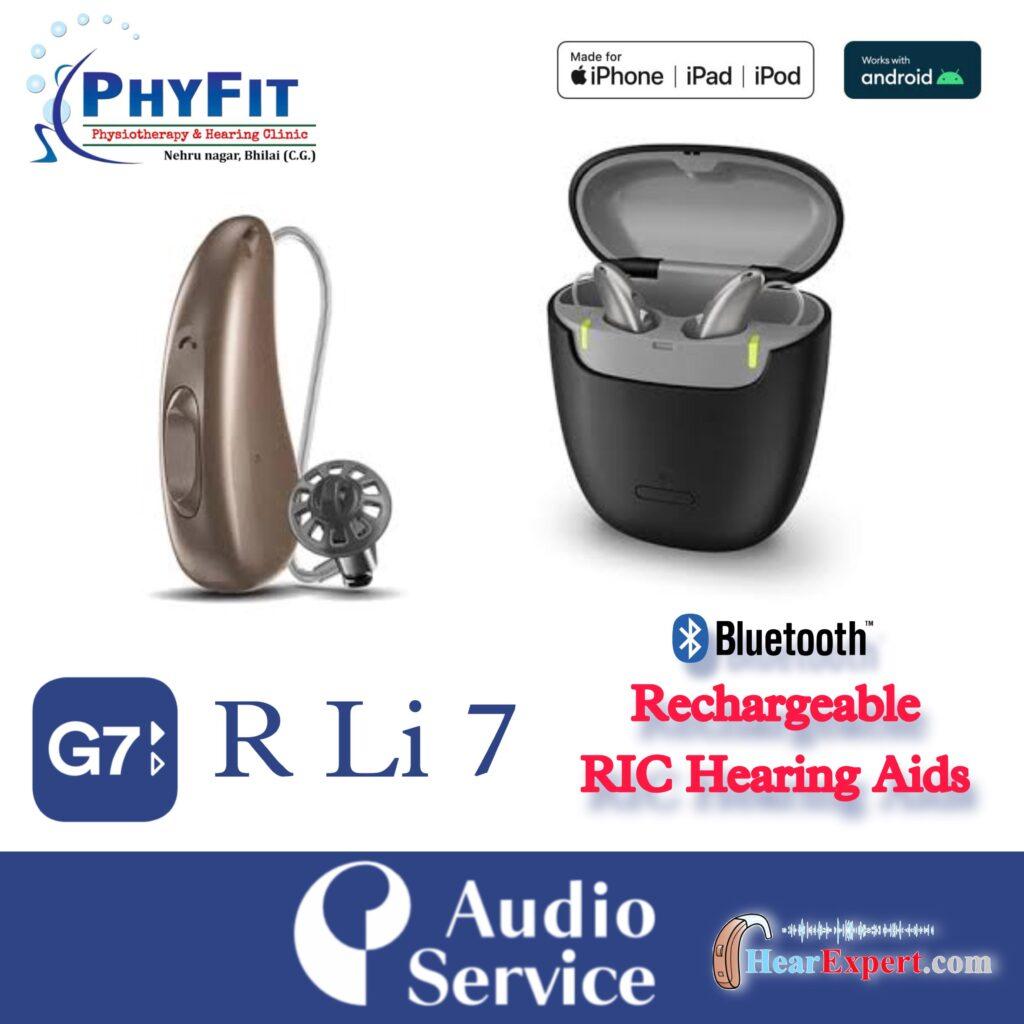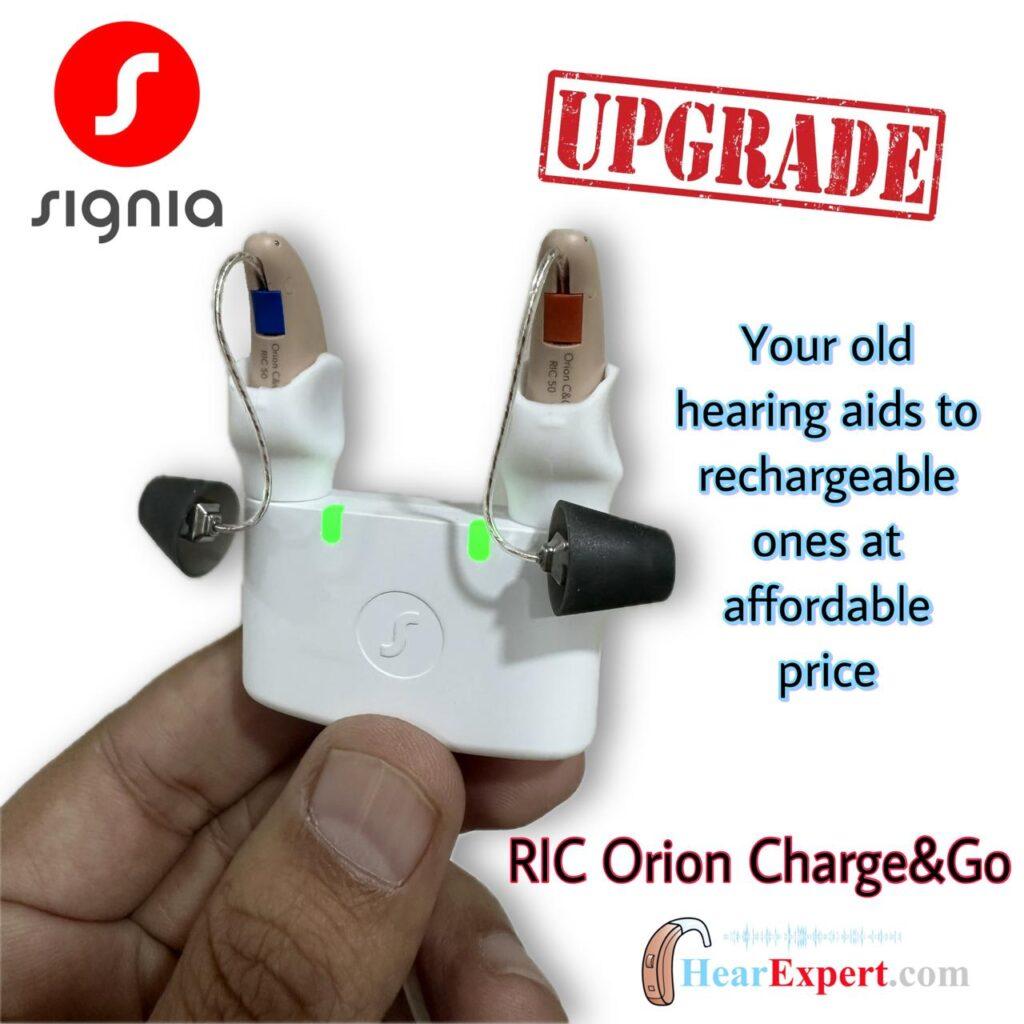Receiver-In-Canal (RIC) Hearing Aids

Receiver-In-Canal (RIC) hearing aids represent one of the most popular and advanced hearing solution designs available today. These devices consist of two main components: a small case that sits behind the ear, housing the microphone and processor, and a thin wire that connects to a receiver (speaker) placed directly in the ear canal. This innovative split design allows for improved comfort, aesthetics, and sound quality compared to traditional hearing aids.
RIC hearing aids strike an optimal balance between discretion and functionality. The behind-the-ear component is typically smaller than traditional BTE (Behind-The-Ear) models since the receiver is relocated to the ear canal. This design reduces the visibility of the device while maintaining easy access to controls and battery compartments. The thin wire connecting the components is barely noticeable, and the in-canal receiver can be customized with various dome sizes or even custom earmolds to ensure proper fit and sound delivery.
The separation of the receiver from the main housing also reduces feedback issues and provides a more natural sound experience, as amplified sound is delivered closer to the eardrum. This design has revolutionized hearing technology, offering users an ideal combination of performance, comfort, and cosmetic appeal.
Key Features of Receiver-In-Canal (RIC) Hearing Aids
RIC devices deliver sound directly into the ear canal, creating a more natural listening experience with reduced distortion and feedback. The strategic placement of the receiver closer to the eardrum improves frequency response and sound clarity.
The behind-the-ear component is significantly smaller than traditional models, and the thin wire connecting to the receiver is barely visible. This makes RIC hearing aids an attractive option for those concerned about the appearance of their hearing devices.
The lightweight design distributes components between the ear and behind-the-ear areas, reducing the feeling of fullness in the ear. Various dome sizes and custom earmold options ensure comfortable, secure fitting for different ear shapes.
RIC hearing aids can address mild to severe hearing loss through exchangeable receivers of different power levels without requiring a completely new device.
These devices easily incorporate cutting-edge features like Bluetooth connectivity, rechargeable batteries, and smartphone compatibility due to their efficient design.

What Makes RIC Different from Other Hearing Aid Styles
The primary distinction between RIC and traditional BTE models is the location of the receiver. In standard BTEs, both the microphone and receiver are housed in the case behind the ear, with amplified sound traveling through a tube to the ear canal. RIC devices place only the microphone and processor behind the ear, with the receiver positioned in the ear canal itself.
This separation creates several advantages:
First, moving the receiver away from the microphone significantly reduces feedback issues that often plague other hearing aid styles. Second, the sound quality is enhanced because amplification occurs closer to the eardrum, creating a more immediate and natural listening experience. Third, the behind-the-ear component can be made smaller and more discreet while still maintaining excellent sound processing capabilities.
Unlike CIC or IIC aids, RIC devices are easier to handle while offering more power, making them suitable for various hearing needs.
Who Are RIC Hearing Aids For?
RIC hearing aids are remarkably versatile, making them appropriate for a wide range of users. They’re particularly well-suited for:
- People with mild to severe hearing loss (they can address a broader spectrum of hearing loss than many completely-in-canal options)
- First-time hearing aid users who desire a comfortable, easy-to-adapt-to solution
- Individuals concerned about the visibility of hearing devices
- Users who want advanced technological features like wireless connectivity
- People with dexterity issues who find smaller, in-ear devices difficult to handle
- Those seeking a balance between performance and aesthetics
The flexibility of RIC devices, with their interchangeable receivers and dome options, makes them an excellent “goldilocks” solution that meets the needs of most hearing aid users.
Candidacy and Fitting Considerations
While RIC hearing aids are suitable for many users, several factors should be considered during the selection process:
- Ear canal size and shape: Extremely narrow or sharply curved ear canals may present challenges for proper receiver placement
- Degree of hearing loss: While RIC devices can address most hearing loss ranges, profound loss might require more powerful options
- Moisture concerns: Active individuals with excessive ear moisture or those prone to frequent ear infections may need special moisture-resistant models
- Manual dexterity: Though easier to handle than tiny in-canal devices, users should still have sufficient dexterity to change batteries or clean the receiver portion
- Budget considerations: RIC devices typically fall in the mid-to-high price range due to their advanced technology
Proper fitting by a qualified audiologist is essential to maximize the benefits of RIC technology. This includes selecting appropriate receiver power, choosing the correct dome size, and programming the device to match the user’s specific hearing profile.
The Future of RIC Technology
RIC hearing aids continue to evolve with promising advancements on the horizon. Future developments will likely include:
- Enhanced artificial intelligence for automatic sound environment adaptation
- Improved energy efficiency with longer-lasting rechargeable batteries
- More sophisticated connectivity options for seamless integration with smartphones and smart home devices
- Advanced health monitoring capabilities, potentially tracking vital signs and cognitive health indicators
- Even smaller and more discreet designs as miniaturization technology improves
- Better moisture resistance and durability for active lifestyles
As these innovations emerge, RIC hearing aids will remain at the forefront of hearing technology, offering users increasingly natural sound experiences and improved quality of life through better hearing.
